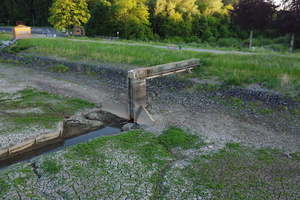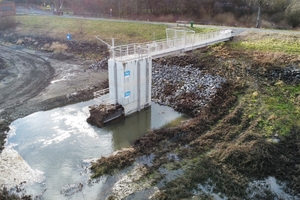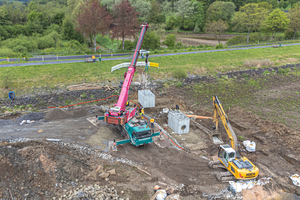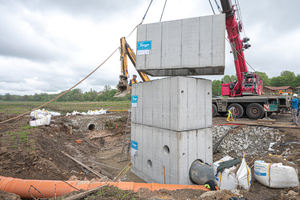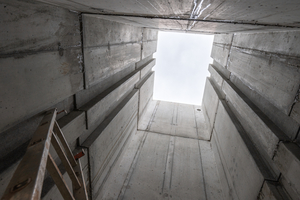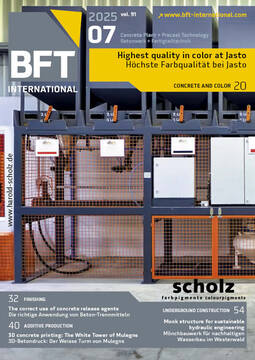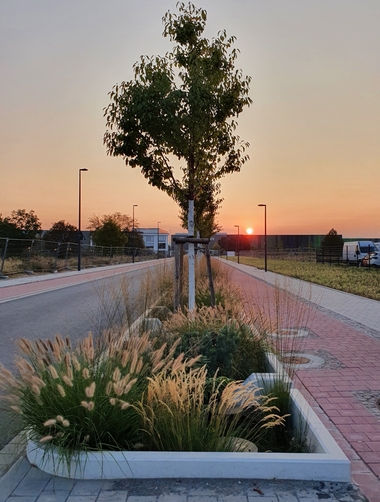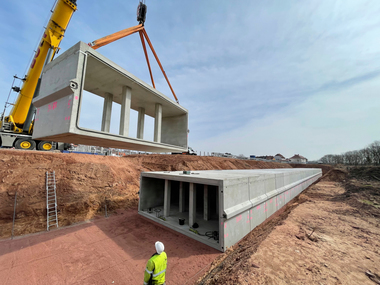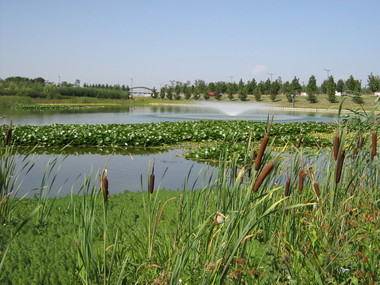Monk structure for sustainable hydraulic engineering in the Westerwald area of Germany
The Monk structure, which regulates the outflow of Lake Wiesensee in the Westerwald area of Germany, required renewal because the stability of the dam was at risk. A complex structure made of precast elements from the Finger-Beton Group was here used.
Lake Wiesensee is an artificial lake located in the heart of the Wällerland region in the Westerwald area of Germany – a low mountain range in the German federal states of Rhineland-Palatinate, Hesse and North Rhine-Westphalia. With its extensively various range of sports and recreational opportunities, it is known far beyond the region. Around the approximately 86-hectare body of water, which was created as a rainwater retention basin – there have been numerous recreational opportunities for everyone since the 1970s. Beginning in 2023, however, to the detriment of water sports enthusiasts, the water has been fished out and completely drained for remediation purposes. Investigations by the responsible water authority had revealed that the stability of the dam was at risk, and it became necessary to replace the Monk structure, which regulates the outflow of the lake. A complex structure made of precast concrete elements from the Finger-Beton Group was used for this purpose.
The old Monk structure, built in the 1970s, was dilapidated and no longer met the operational and occupational safety standards of today. In addition, an incident had occurred in January 2023 when unknown persons tampered with the dam flap, causing an uncontrolled outflow of water. For this reason, the responsible officials decided to rebuild the Monk structure. The original plan had been to build the new structure, which serves to control the drainage and regulation of surface water, when the lake was dammed. This was to prevent the sludge that had been deposited at the bottom of the lake for decades from being washed into the receiving watercourse when the water was drained, thus endangering the fish population and other creatures. In the course of planning. However, it became apparent that remediation at full water level would cause a number of problems: for one, the dam is secured with hydraulic engineering paving up to approx. 30 m into the lake.
Water control and shoring at water depths of up to 5.00 m at the Monk structure would therefore have been extremely complex and cost-intensive. In addition, the German technical Control Board (TÜV) specified that it would accordingly be necessary as well to upgrade the spillway of Lake Wiesensee. Consequently, if the lake had been restored without being drained, there would have been a risk of the dikes failing and the communities below the lake being threatened by flooding. For this reason, the responsible authority, Struktur- und Genehmigungsdirektion Nord, imposed a drainage order for Lake Wiesensee, which was then implemented by the collective municipality of VG Westerburg.
Water is diverted during the construction phase
“For new construction of the Monk structure, a temporary dam was built in front of the planned excavation pit and a bypass pipe constructed to divert the water from the two receiving water inflows of Lake Wiesensee into the drainage culvert of Lake Wiesensee,” explains Amir Hasanagic from the engineering company Dr. Siekmann + Partner mbH, in Westerburg. “In this way, we ensured that construction activities are possible in the area of the excavation pit during the dry weather phase. Two pumps were operated in front of the temporary dam during minor rain events to prevent the dam from flooding. Unfortunately, during heavy rainfall during the summer of 2024, the pumps and the bypass pipe were at times repeatedly overloaded, meaning that the construction site had to be deliberately flooded This slightly extended the construction time for this part of the project,” says Hasanagic.
Monk structure made of precast reinforcedconcrete elements
Engineers from the Finger-Beton Group created, especially for Lake Wiesensee, a new Monk structure, consisting of a three-part construction. Steven Grimes, Managing Director for Special Structures at Finger Baustoffwerk in Ludwigshafen, Germany, explained the special features of this project: “The strict requirements placed on the dimensional accuracy of the individual elements presented a challenge. The accuracy had been specified to be able to subsequently and install the stop-log system exactly true to measure.” Once assembled, the result is a rectangular reinforced-concrete structure. The inside dimensions of the front chamber measure 2.15 m x 1.60 m and 1.00 m x 1.60 m in the rear chamber. Upward, the Monk structure is completely open. The clear height of the structure lies at 6.7 m. In front of the Monk inflow, a 3D screen basket was installed to provide a high level of protection against bedload and flotsam. To access the top of the 3D basket, the Monk structure was provided with a one-meter-wide footbridge with rail. This footbridge leads up to the basket and descends from the upper edge of the Monk structure through a door in the rail.
A successful example of sustainable hydraulic engineering
The inflow to the Monk structure consists of a DN 1000 opening that can be closed by an externally mounted gate valve. On the partition wall between the front and rear chambers, there are two openings in the bed area that are equipped with gate valves. The gate valve of the DN 250 opening is motor-controlled and linked to a water-level measurement system. This means that smaller discharge quantities, specified by the water law, can be set by remote-control systems. The 800 x 800 mm opening is always closed with a gate valve and opened only manually: for example, when the lake is drained or when larger, not precisely defined quantities of water are discharged. The front chamber is divided by a 2-row dam gate.
Amir Hasanagic explains: “The dam beams are designed to be pulled to ensure that the clear-water phase is discharged. There is a DN 300 opening fitted with an external gate valve behind the dam beams. This is always closed. If the drained lake is to be dammed again, the dam beams can be inserted to the desired height. For this purpose, the dam gate valve and a gate valve in the intermediate wall of the structure are opened wide enough to ensure that a minimum amount of water can always be released into the tailwater during the damming phase. Without this gate valve, it would be more complex to provide lake impoundment while ensuring a constant minimum of water release,” says Hasanagic. There is a DN 400 side opening in the rear chamber of the new Monk structure, which is usually closed by an externally mounted, manually operated gate valve. This is an emergency outlet that can be opened if, for example, system components in the Monk structure are so defective that water can no longer be drained via the front chamber.
Finger-Beton included in the planning phase
Amir Hasanagic: “We wanted to divide the structure, which weighs around 58 tons in total, into three components, since the original plan had been to lift the precast reinforced- concrete elements across the dam into the excavation pit by a heavy-duty crane. Only later, in the course of construction, it became apparent that the subsoil conditions would allow a crane to be positioned close to the planned structure, which greatly facilitated the process. In order to coordinate the geometries of the building, the subdivision of the precast elements and their subsequent sealing, we included the employees of the Finger-Beton Group already during the planning phase. In this way, construction of the Monk structure by the construction company G. Koch GmbH & Co. KG from Westerburg proceeded smoothly on 6 May 2024, within only a single day – thanks also to precast construction techniques,” says Hasanagic.
The renovation of the Monk structure was completed in the autumn of 2024: By Christmas, the bottom of the Wiesensee, which now looks more like a meadow overgrown with bushes, had been mowed with special machines. Following a comprehensive inspection of the dikes, it is planned to finally flood the lake with water in the course of 2025.
CONTACT
Finger Baustoffe GmbH
Bellnhäuser Straße 1
35112 Fronhausen/Germany
+49 6426 9230-0

